How to Ensure High-speed Internet Access When Buying a New Home
Ever since we got married, my wife and I lived in a small house in a small town in Tennessee. After visiting San Francisco for Macworld/iWorld a few years ago, we thought seriously about moving to what seemed to be greener pastures (see “Impressions of a Macworld Newbie… 2014 Edition,” 9 April 2014). But after a bit of research, the reality set in that moving to a tech hub wasn’t feasible, both due to our jobs and sky-high property prices on the coasts.
But we were still growing out of that tiny house. We decided that if we couldn’t move to a big city, we’d move to the country proper. Our little town had become increasingly restrictive — we couldn’t even keep chickens, for crying out loud! — and we wanted to give our son a chance to roam the woods as we had as children. After years of searching, we finally found an agreeable property in our price range, but one of our big questions was if it had suitable broadband access. High-speed Internet access is increasingly the equivalent of power and water for many people in the 21st century, and it’s absolutely essential for my work on TidBITS. No Internet, no purchase.
The Dangers of Sketchy Broadband Access — When you’re looking to move, access to broadband is a key consideration, but real estate agents often fail to mention it in home listings. And while those of you in cities may be wondering what the fuss is, as I wrote in “Net Neutrality Controversy Overshadows U.S. Broadband Woes” (19 February 2015), broadband penetration in the United States is abysmal, especially in rural areas.
Ensuring high-speed Internet access before purchase can be a tricky proposition. The most famous story is of Seth Morabito, who checked with Comcast to make sure he’d have service at a new house in Kitsap County, Washington, before even making an offer. Comcast said there was access, a flat-out lie. Faced with paying up to $60,000 to have cable run to his house, he contacted CenturyLink to see about getting DSL but was told that the area was in “permanent exhaust” and that they wouldn’t be adding more customers. Nor was there any way to set up fixed point-to-point wireless or network with a neighbor.
Morabito’s story was reported widely, but most media outlets seem to have missed the eventual happy ending: he contacted the Kitsap Public Utility Commission, who eventually hooked him up with an affordable fiber optic connection.
Measures to Ensure Broadband Access — While it’s great that Morabito’s story ended well, it shows how tricky it can be to verify broadband service at a new location. Here are a few different ways you can do this:
- Current owner has broadband: This is your best-case scenario. Someone currently lives in the home, they have broadband, and they let you connect to their router so you can perform a speed test.
- Call the ISPs: You should do this regardless, for due diligence, but you can’t depend on it, as Morabito’s story illustrates. Similarly, a friend of mine called a local ISP years ago and was promised high-speed service, but he ended up with 512 Kbps speeds that were practically unusable. You can certainly ask for some sort of speed guarantee in writing, but I wouldn’t bet on getting one (if you’ve had any luck with this, let me know). If you’re lucky, you’ll have multiple ISPs you can call, but I had only one.
-
Talk to neighbors: It’s always a good idea to say hello to your prospective new neighbors to get a feel for hyperlocal issues, and while you’re doing so, ask them what sort of Internet speeds they get. If you hit it off well, they may even let you perform a speed test on their network. Unfortunately, this isn’t always a reliable data point either, because surprisingly short distances can make a lot of difference. The nursing home across from my mother’s house had better DSL speeds than she did for years. And a friend of mine who lives in one of the most affluent neighborhoods in town was told by Comcast that his house doesn’t exist. The one exception is if you’re moving into an apartment complex that has
a single feed, in which case your neighbors’ speeds should match yours.
Unfortunately, since I was buying a flipped home that had been unoccupied since 2011, asking the current owners was pointless, and while the ISP said the right things (I didn’t get a chance to meet our neighbors until we moved in), I wanted to verify connectivity myself.
How to Verify Your New Home’s Connectivity — It pays to do a little legwork. If you’re looking at a standalone house, take a walk around and note any boxes you see attached to the house. Phone and fiber-optic boxes are often clearly labeled. A fiber-optic box is an excellent sign, but a phone box just tells you that you can get a landline, not necessarily that you can get DSL, much less fast DSL.
In my experience, Comcast boxes aren’t labeled — they’re just plain gray. But they’re usually easy to open (I had to duct tape mine together) to see if there’s a coaxial connection in there.
Finding a coaxial cable doesn’t necessarily mean you have a cable connection. It could also connect to a rooftop antenna or satellite dish. So you’ll want to trace the cable to see where it goes. If it goes underground or to a pole, that’s a good sign. However, an underground cable could also lead (or have led at some point in the past) to a legacy C-Band satellite dish, or even to a ground-mounted modern satellite dish. (In the photo of my old house below, I point out the route of the coaxial cable from the box to a strand of wires that leads to a utility pole.)
Once you’ve looked around the house, branch out further. Walking to the end of the driveway, I found a fiber-optic route, clearly labeled as such. “Jackpot,” I thought! Also good news was my discovery that a telephone company substation was located just down the street from our new house. Distance is key in DSL, so if you can find a substation close by, that’s an excellent sign.
But you can’t be sure until you get service hooked up and perform a speed test. Here’s where a good real estate agent comes in handy. After days of pleading on my part, we reached a workable deal: I would pay to have Internet access connected to the house, and I would test it within the ten-day home inspection period. My agent came up with this line under the inspection clause in the contract: “Buyer to inspect NCTC Internet speed is compatible for work.” (North Central Telephone Cooperative is my
local telephone company and ISP.)
That piece of negotiation was stressful because the bidding on our property was highly competitive. A complication like a guarantee of Internet speed could have lost us the house. Given the importance, I was willing to take the risk. Fortunately, our bid won, and so the scramble to verify the Internet speed began.
After setting up the home inspection, my second call was to NCTC to set up Internet access as soon as possible. The bad news was that fiber optic wasn’t available yet — I was told that it was slated to come online in a few months. Until then, they said we could get up to 12 Mbps, which, while not ideal, would at least be usable.
However, we hit a wall when, after I had given them the address, I was told that it would take two weeks to run a phone line to the house. Since I had performed my due diligence beforehand, I knew there was a phone box already there, so a two-week delay was nonsense. Unfortunately, I couldn’t convince the lady on the other end of the phone of that.
Again, a good real estate agent can help here. After I left another panicked message for her, she did some digging and found that the address on the listing was incorrect. And after I later gave the lady at NCTC the correct address, we got an appointment to get service connected a week later.
Sidebar: To Buy or Rent a Router? — I faced another decision at this point: should I provide my own router or rent one from the telephone company for $3 per month?
I have long preached the gospel of owning your own router and modem. You’ll save money in the long run and often end up with better equipment, and thus a better connection, than what the ISP provides.
However, I ignored my own advice this time, for a few reasons:
- My AirPort Express is getting creaky in its “old” age, and I need to replace it, but haven’t decided on a new model, since Apple now seems uninterested in the router business.
-
I wanted the connection to work as soon as possible. If the installer set up the router at the same time as everything else, that would make everything go more quickly. Any problems with hardware I bought could introduce delays.
-
Most importantly, DSL, especially NCTC DSL, is prone to surges from lightning strikes. Growing up with NCTC dial-up and DSL connections, I had to replace a lot of modems and even motherboards. It can somehow even happen with fiber-optic connections — a friend had to get a modem replaced despite having a fiber-optic connection. Since it was an NCTC box, they replaced it for free.
I’ve spent years trying to prevent lightning-induced surges in phone lines. Unfortunately, the only reliable method seems to be unplugging the phone line every time there’s a storm. That’s not realistic, so I’m going to stick with easily replaced phone company equipment and Wi-Fi. Fortunately, I visited the property several times during the closing process, during and after some serious thunderstorms, and the connection was solid every time, so maybe my new house won’t suffer from these sorts of surges. The equipment has also survived a few storms since we’ve been living here.
Get Yourself Connected — The next stressful step was getting the actual connection. I had given the lady at NCTC an address and description of the house, but there’s no number on the house and no cell service in that area. When the installer called me in the morning to let me know he was on his way, I forgot to pass along those details.
As I was unlocking the front door of the new house, I saw an NCTC truck fly down the road past the house. I was filled with a sudden sense of dread. Was that the guy? Was he coming back? What if he tried to call me when I had no service?
Thankfully, a small miracle occurred. My brother-in-law, who happened to be in town, pulled up to the house unexpectedly. He told me that he saw another NCTC truck at the NCTC substation, which we had both passed on our way to the new house. He agreed to drive back, flag the guy down, and tell him where we were.
It turned out that everything was fine, and the installer just had to activate some stuff at the substation first. If there’s a lesson here, it’s to make sure you share all the pertinent details in advance!
The installation went smoothly, and after a couple of quick checks with the Speedtest app on my iPhone, I verified that we had roughly 12 Mbps down. But we decided to perform some more tests to make sure that held up in real-world usage.
My kid has something of a Power Rangers addiction, so one of my first tests was to pull up an episode on Netflix with my iPhone. That worked fine, so my brother-in-law also pulled up an episode and we played both at once with no stuttering or noticeable drop in quality. So far, so good. I later tested playing YouTube videos and managed to play four at once, though I hit a bump when I tried to increase the quality of any one video past 720p. That was livable until we got a fiber hookup.
My other high-bandwidth requirement is video calling, so Adam agreed to a quick FaceTime test call. Not only was the call a success, but I also managed to maintain the call far from the house into a metal outbuilding about 120 yards away. That rental router turned out to be a good decision!
After the Move: An Update — The 12 Mbps download speed was, as I had suspected, minimally sufficient. I was able to follow the 2017 WWDC keynote pretty well, and video from highly optimized services like Netflix and Hulu played fine.
What hurt more was the sub-1 Mbps upload speeds. That didn’t affect my day-to-day TidBITS duties much, but it made iCloud Photo Library syncing and Backblaze backups difficult. I highly recommend paying as much attention to your upload speed as your download speed.
The good news is that the fiber network in my neighborhood has been activated, and it’s now connected. The even better news is that NCTC speeds are going up by about ten times what they are were without any bill increases. Friends of mine who have been paying for 30 Mbps service will soon get 300 Mbps for the same price! I think I’ll be content with “mere” 100 Mbps service, but 1 Gbps service will be within reach if I need it.
The worst part in all of this was getting Comcast to disconnect my business Internet line at the old house. It took a week of haggling with the company, including calls to customer support and direct messages with the @ComcastCares Twitter account. I even emailed the president of Comcast Business at one point out of sheer desperation.
Even though my 2-year contract had expired in January 2017, Comcast first tried to stick me with a 60-day notice period for termination. Then, after a retention agent tried to trick me into signing a 3-year contract extension, I eventually got the service cut off and even received a credit on the account. Although it all worked out in the end, the experience soured me on the company, and I won’t do business with Comcast again if there’s a reasonable alternative.
After Fiber: Another Update — As I write this, the NCTC installers have just left, and we now have a 100 Mbps fiber-optic connection. As you can see in the screenshot below, it’s quite the upgrade!
The entire process took about two weeks. First, a work crew had to bury a fiber-optic line from the box at the road to my house. That left a bit of a mess, but thankfully NCTC fixed it when they completed the install. Below is a picture of the machine they used to fix up the yard. (For the farm equipment geeks out there, it’s a Kubota tractor with an FFC Preparator attached — basically an enormous tiller.) After tilling the
mess left behind by the trencher, they covered it with straw and grass seed.
Next, another crew had to come out to connect things on both ends of the line, including installing the fiber-optic box on the side of the house.
Finally came the big day, when a third crew came to run the fiber inside the house. That was simple enough: drill a hole in the wall near the router, run a fiber line to the box, seal the hole with silicone, and tuck the line into the siding.
As part of the install, they added an uninterruptible power supply, which will keep the phone line working for several hours during a power outage. Unfortunately, it won’t keep the Internet connection online.
The tricky part of the install was hooking up TV service to our below-grade TV room. Fortunately, there’s a solution I wasn’t aware of: AirSonics makes pairs of Wi-Fi routers that wirelessly transfer the IPTV signal. The downside is that it’s an extra $3 per month to lease the boxes, but it also means fewer wires and I can also move the TV box anywhere I like.
This fiber-optic service would not exist without federal grants, work by the Rural Broadband Association, and pressure from the FCC for NCTC to increase their speeds to broadband levels. It’s a tremendous example of government actually working well, and helping to establish services that the free market failed to do.
If anything, verifying that the Internet access at our new place would let me keep working on TidBITS was the easiest part of the move. I hope my experiences can help you during your next big move, and if you have stories about getting broadband at a new house, please share them in the comments!
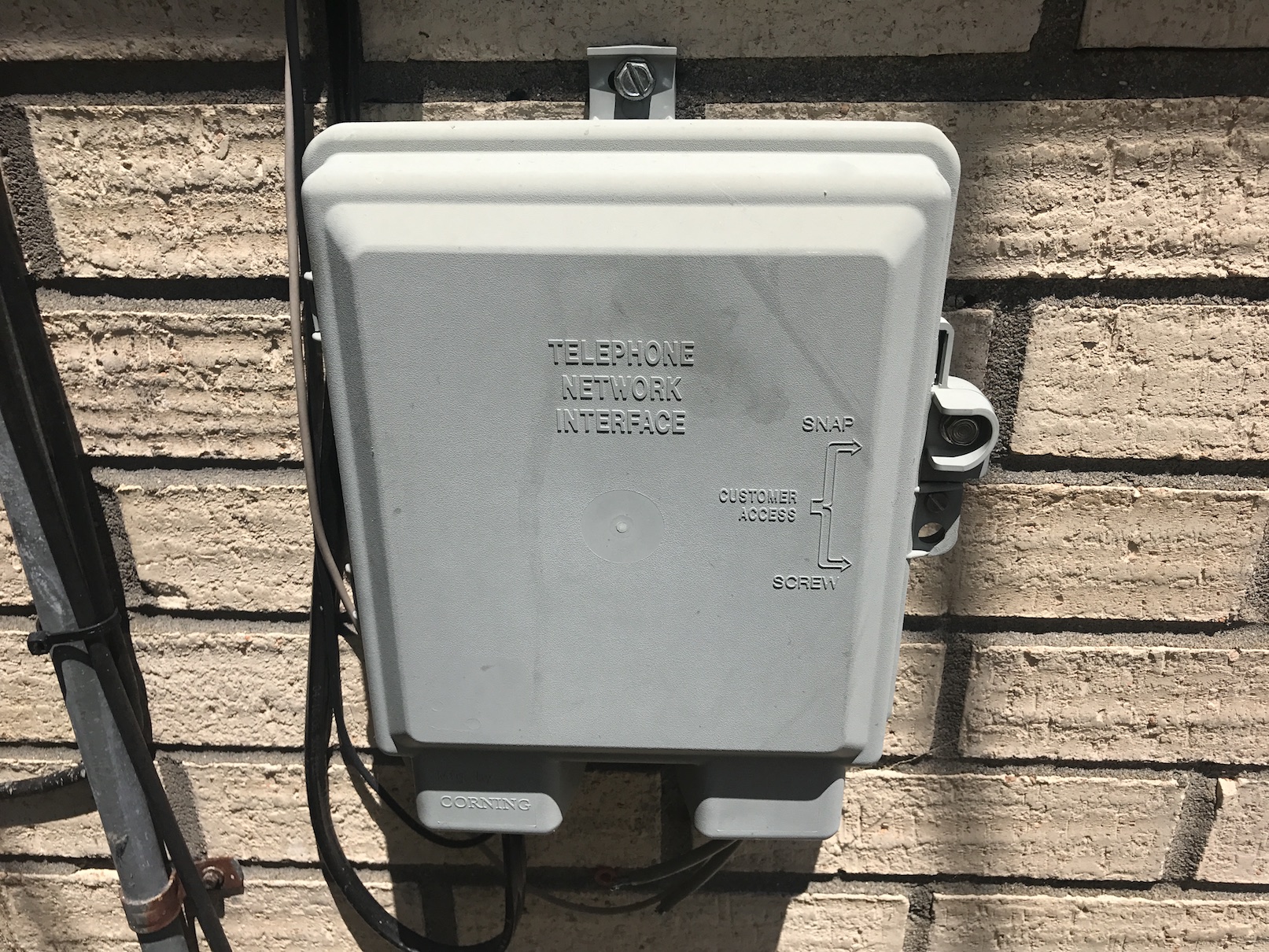
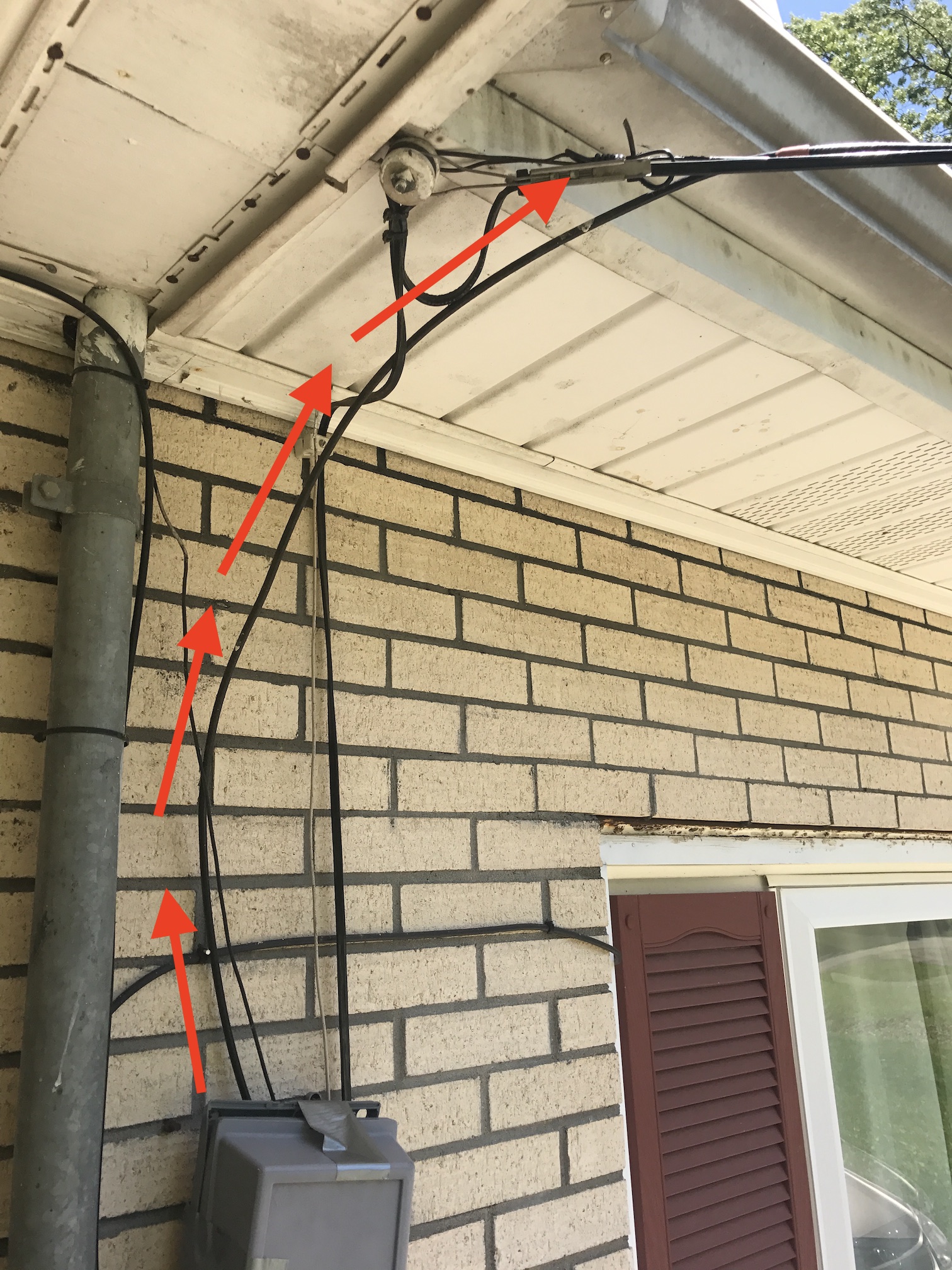
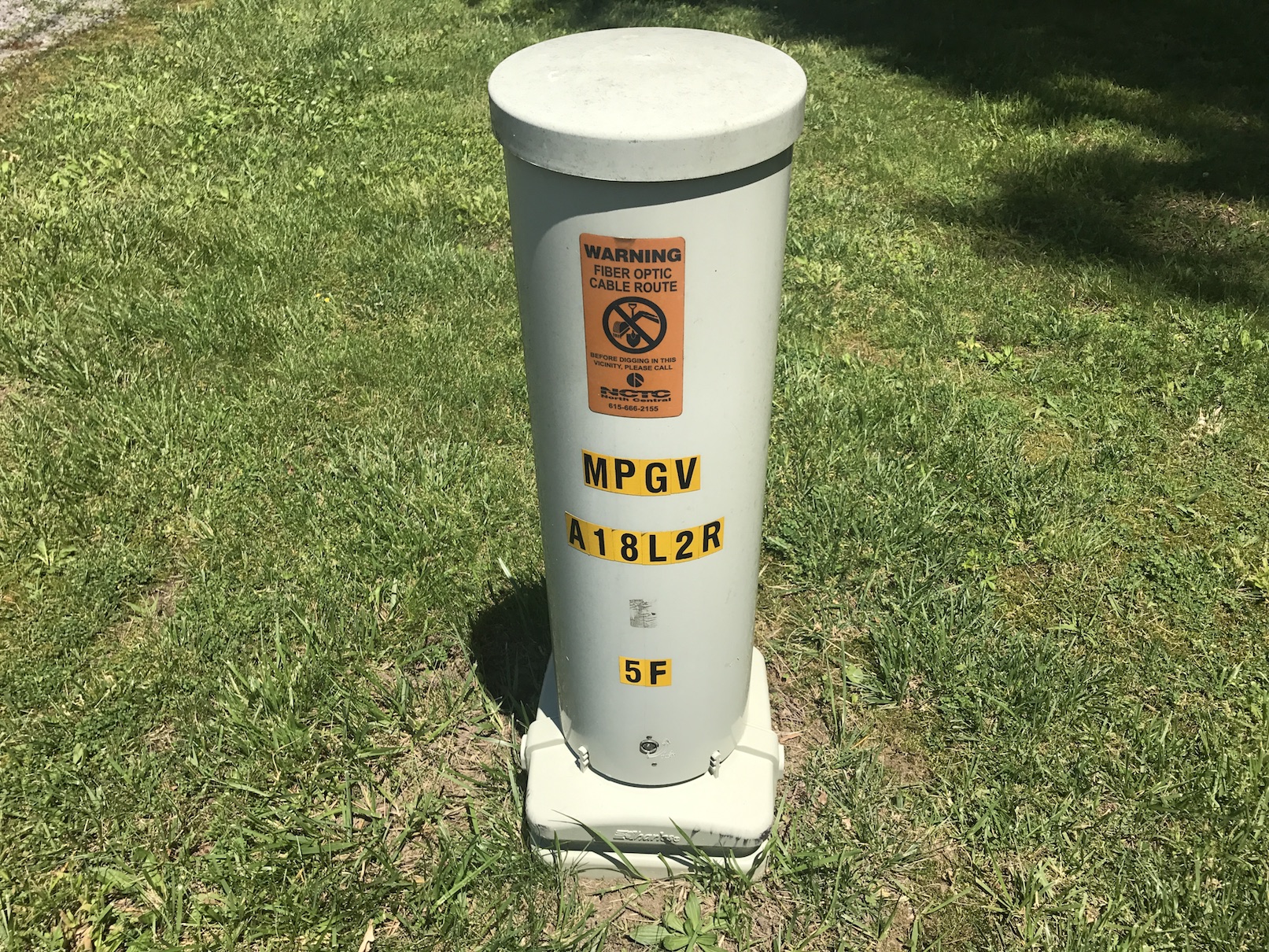
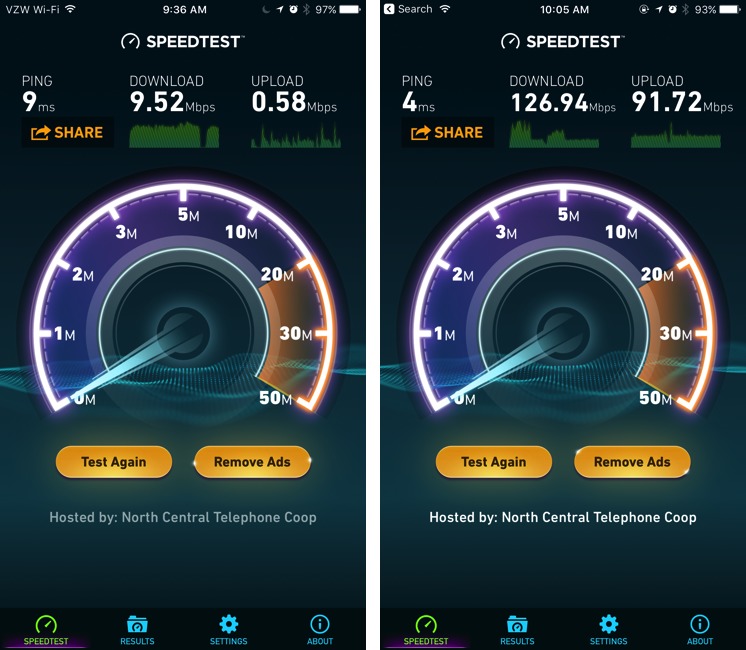
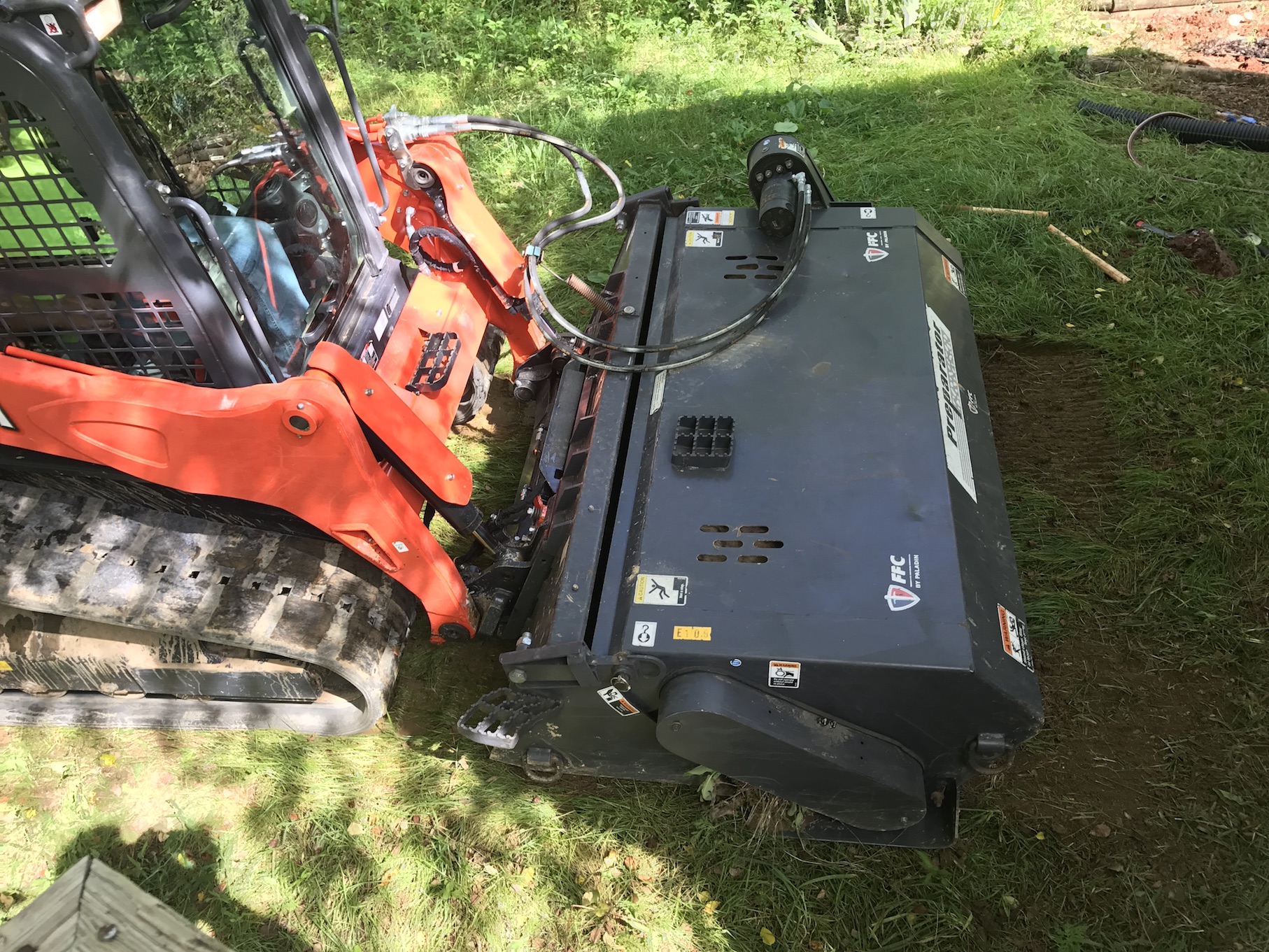
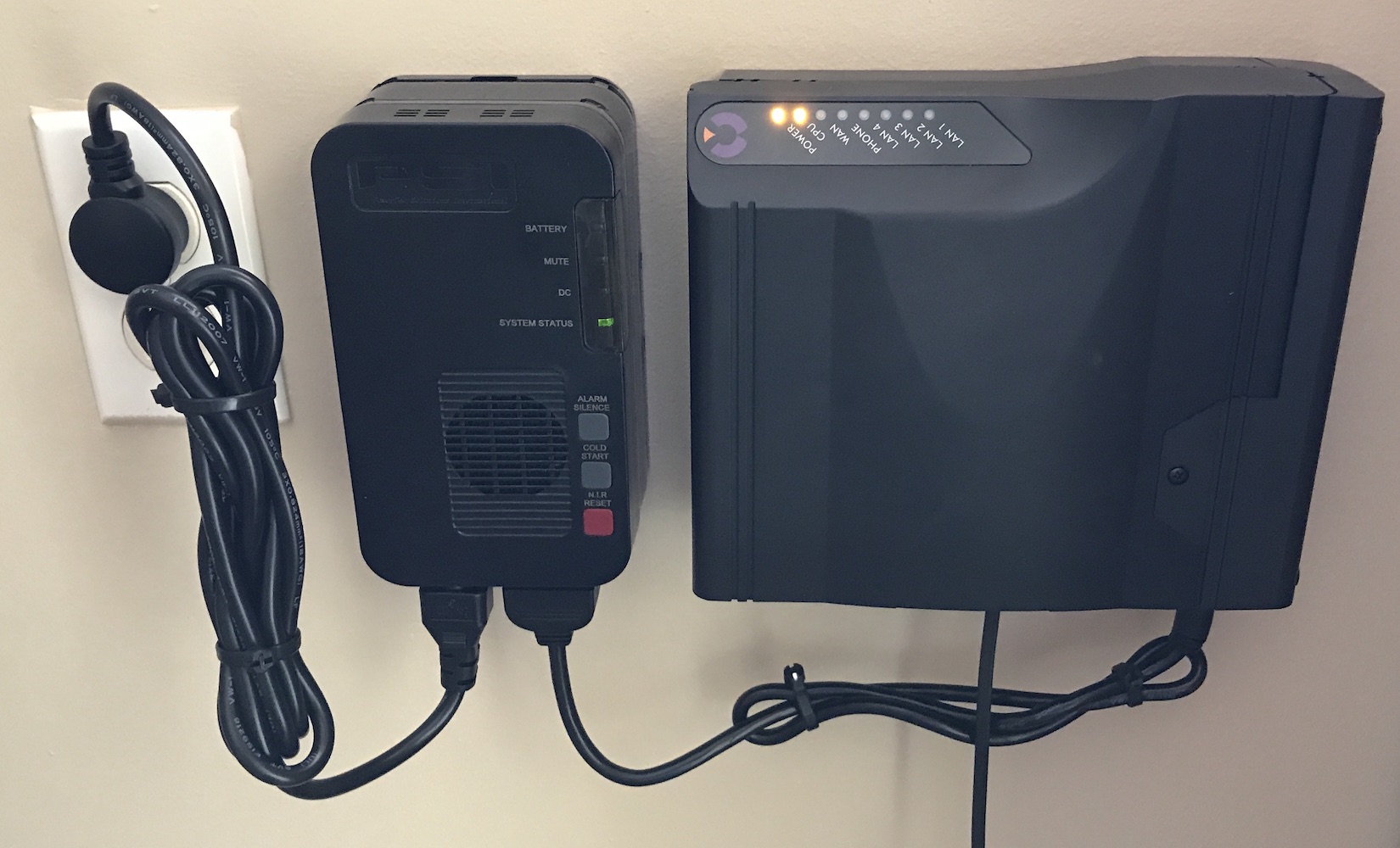
Great sharing and wisdom, Josh. I appreciate you taking the time to remind me of this priority.
We moved into a 1940s house in kind of a black hole in a major metro area only 3.5 miles from the Mall of America and 400 yards from a major interstate.
We were told that Internet was available and assumed that meant it was there. It wasn't and we paid Comcast to run the line to our house (almost an identical picture as you shared). Yay!
After a year or two CenturyLInk DSL moved into to share the Comcast hub about 100 yards away. How? I don't understand but the point is that every time they work on the hub (3 times every week) my Comcast service is interrupted. They assume no one works from home in this forgotten area. It is settling down now but hard to contact Comcast when problems. Why?
ATT covers the entire Minneapolis:St. Paul area with the exception of about 4 acres. You guessed it: our home is in the middle of it--and we had two years remaining on our cellular contract. I got in the habit of jumping in the car and driving about 200 yards away every time my iPhone rang.
We recently were able to switch to Verizon with a slightly better experience and they added a new Samsung repeater. So we're in business. They even sent an engineer to our home to take several readings. Their service was fantastic.
So, what is the point? You hit it on the head: Take nothing for granted with your connectivity. It can be too late after a move to find out you are no longer connected to the "world."
When I first moved to this town, I was on AT&T for cell service. Unfortunately, AT&T has zero reception in this town. In fact, they're not even licensed to operate here! It was a very long year until my contract was over…
As a fellow Tennessean who lives a couple of counties away from you, I feel your pain. I feel very fortunate to have 8 Mbps service that is beamed to me via microwave from Franklin, KY. I bounces off a water tower, silo, and neighbor's house to get here, but it does work.
Whoa, that's wild. Is that a commercial service or something you rigged up? I bet the latency is through the roof.
Home grown commercial is maybe the best description. It's one of two ISPs doing this in our county, though their coverage areas don't overlap much. It usually works very well for what it is. Most of my test results are 30-35 ms latency, 7.6-7.8 Mbps down and 2.2-2.4 up. It does a good job of keeping a tech savvy family of five online with our Apple TV, doing homework, etc. FaceTime calls can be iffy in the evenings when everyone is home. The nice thing is that it is truly unlimited data. As long as all the parts and pieces are up and running we always get best effort. Some reading this may think the results above are from the dark ages, but it is a far cry better than satellite service.
The frustrating thing is that this sort of service could be in place for rural areas already if small ISPs like mine didn't have to deal with a hostile bureaucratic and legislative environment.
35 ms isn't bad at all given all the bouncing the signal has to do. What's the name of the ISP? I want to check this out.
I decided your question needed more of a reply that I could put here--or maybe it's that I'm just long winded. Please check your email.
A last observation: I make these two replies as a mild thunderstorm rolls through Middle Tennessee. If I were still using satellite service (and I tried both major carriers) we would have been offline until the storm passed. Our current service hasn't flinched and likely won't unless lightning happens to pop one of the repeaters between me and the fiber connection back at my ISP's office.
Interesting that this is a problem in the US. I've lived in several locations in the UK since I moved to the country, and all I needed to do was go onto any ISP's website and enter the address of the property I was looking at to find what speed I could get. (And I moved twice in the past few years, and used this to rule out houses that wouldn't be suitable because internet access was too slow.)
Interesting story, and sound advice. Please keep us updated to the transition to fiber when it occurs in a few months (i'm keeping my fingers crossed for you).
Thank you! Unfortunately, even fiber will only be like cable speeds for now, but still an improvement.
Hey Rodney, I got fiber sooner than expected, and with better speeds than expected! I've updated the article accordingly.
I have a 2nd home in the Hill Country of Texas, three miles north of Kerrville, TX. The property is on the county line and is not served with any high-speed service. A buddy of mine has a place 45 minutes away in the middle of nowhere, and 15 minutes from a paved road. Thanks to the governments effort to stimulate the economy years back, he has fiber service. Very frustrating! Conversations with politicians seem to go nowhere. ("I guess they'll put it in when it makes sense") I'd like to spend more time there, but working from there is getting to be increasingly difficult with satellite service.
I'm not sure checking for internet service would have altered my buying decision, but being so close to town, I mistakenly assumed it was available.
What sort of issues have you seen with satellite service? I was just talking to a friend who has it and is getting 25 Mbps down and 5 Mbps up, which doesn't seem too bad. He hasn't had it long enough to say if storms or weather will be an issue (and in his case, I doubt cost is a major issue).
Great piece, thanks. What speed test app do you recommend as reliable? For the Mac? For the iPhone?
Ookla Speedtest is a fine solution for most people, but others we've tested have worked well too.
http://tidbits.com/article/16998
Yep, Speedtest is the gold standard.
What about HughesNet? (Satellite internet)
I'd be interested to hear stories from those who have it because I haven't heard a good one yet. People say it works, but it's slow, fussy, and unreliable.
A tip for terminating your service with Comcast: tell them you're moving to Australia. I got no arguments when I used that reason for ending my service.
We moved to upstate PA 17 years ago, at which point, no DSL in our area, no cell service, barely dial-up. About 5 years later we got rattle-trap DSL, highly erratic, and thus it has been ever since.
Frontier, which took over another outfit about that time, is the bane of the area and seems not interested in us hicks. They are the only non-cable outfit that serves the county. We could get cable (I think) but since we've already ditched TV (satellite) I have no interest.
Speed (already miasmic) drops when it rains, when the wind blows, when Santa passes over. I've talked to our state rep, state senator and county commissioners, all of whom put me in touch with a guy from Frontier who, after some prompting, admitted that they didn't have the money to put into our benighted spot.
The county will get what sounds like a single run of fiber in as couple years, to the school (our county has only one) and the courthouse, but that's about it. As PA has one of the largest rural populations in the country, I find it particularly odd and vexing that so little effort is put into serving what is a substantial number of people, though scattered. Sounds like TN has a bit more caring for such things.
Just a note that there's no shame in getting cable Internet without TV service — that's what we have. The cable companies often offer deals that make the the package with TV (and phone) service cheaper than just Internet alone for the first year, but you can just drop the stuff you don't want after that.
I have just cancelled my UK 'old style' copper wire broadband with BT (52 Mbps diwnload; 17 Mbps upload, 40 ms ping).
Why?
I have been a community volunteer in Gigabit 'install it yourself' fibre optic to every property (FTTP).
Now i have a dependable 940 Mbps upload and download, with only a 2 ms ping. And its all for only 30 UK pounds a month (roughly $40).
This B4RN - broadband for the rural north - b4rn.org.uk
I guess the quality of Comcast service depends on where you live. I'm in Santa Cruz, CA, not exactly a high priority community, or so it was ten years ago. Since then the competition has heated up between AT&T, Comcast, Charter and DISH. My Comcast Internet speed has increased dramatically twice over the past year or so. I guess they were getting pressure from the California Public Utilities Commission to stop throttling service. When I first got Comcast Internet service ten years ago or so I think I was getting around 100 Mbps download speeds, which was twice what I was getting from my supposedly high speed DSL service. Now I'm getting over 325 Mbps download speed, which seems pretty good according to the speeds you listed. However, I'm only getting 11.7 Mbps upload speed with 16ms latency. I don't do much uploading these days so a low speed doesn't matter to me, personally. I won't presume to speak for others. I also got a cable box upgrade a few years ago. The biggest changes were a software interface upgrade and a higher DVR capacity.
Maybe I've just been fortunate, but I've had good luck with Comcast customer service. As well I was able to walk into the local Xfinity store (just a few doors down from the AT&T store) and exchange my 802.11n router for a dual band 802.11ac model for no extra charge. My Comcast TV package is a little on the expensive side, but given that it includes free phone service, including long distance, and free Internet, I can't complain too loudly. I've happily left DSL and the phone company behind. It seems most of the ISPs around here are now using VOIP for phone service, which means their costs are minimal, except for all those taxes and fees they pass on to us.
I've heard good stories and bad from friends about every major service provider in the county: Comcast, Charter, AT&T and DISH. The biggest problem seems to be that they often require a significant level of technical expertise to use properly. And not everyone has the chops. I'm lucky enough to understand what the Comcast service reps have told me about troubleshooting my router and cable box. Fortunately, in my experience, they are willing to help those who don't understand. They can run most procedures remotely from the office. This capability has undoubtedly saved them an untold number of service calls.
Comcast customer service reps have happily helped me when I had problems. What's more, they have shown me how to troubleshoot my equipment myself. I only recently learned that the "A" button on my cable remote takes me into a troubleshooting mode with a variety of procedures I can run myself with the press of a button—including resetting Netflix, which can have cash problems, now that it comes over the wire from Comcast.
This is off the topic of finding good Internet service when you move, but I wanted to give Comcast some props since they have been good to me, in the main. Of course, YMMV. But it's clear to me that service quality is a local, not a global issue.
Off Topic:
"It removes rocks between 1" to 20" in diameter"!!! Living in west TN, we don't have the 20" rock problem!! I'd move to the middle or eastern part of the state, if I could! Rocks and all! ;)
OTOH, we also don't have many viable options for high speed access. So far, Comcast has been reliable and seems to have made strides in improving customer service... as long as you can reach a US-based agent.